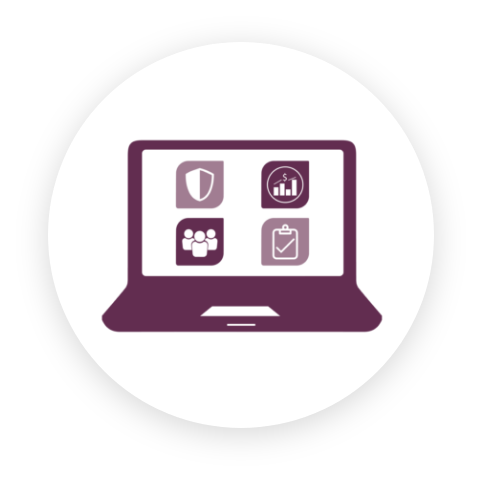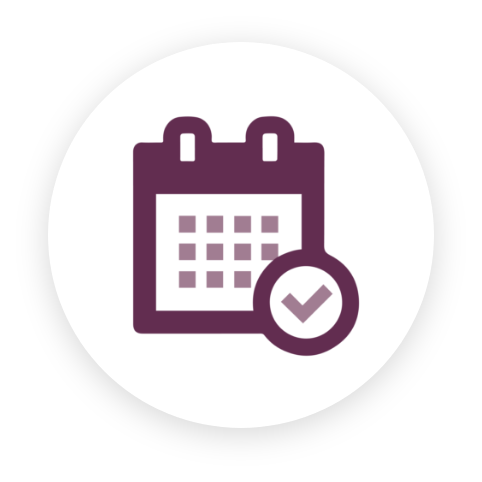FFRCA How-To-Guide
[vc_row css_animation=”” row_type=”row” use_row_as_full_screen_section=”no” type=”grid” angled_section=”no” text_align=”left” background_image_as_pattern=”without_pattern” z_index=”” css=”.vc_custom_1601943405097{padding-top: 50px !important;padding-bottom: 50px !important;}”][vc_column][vc_column_text]
NOTE: the FFCRA officially ended/expired on 9/30/2021. This page is provided for historical informational purposes only.
Basics:
- Effective Dates: April 1, 2020 – December 31, 2020 mandatory; January 1, 2021 — March 31, 2021 optional; April 1, 2021 — September 30, 2021 optional [due to the American Rescue Plan of 2021 (ARPA)]
- Applies to all employers with fewer than 500 employees; for information about possible “exemptions” from the FFCRA, see “Other Elements” section below.
- Provides “wage replacement” for employees with wages lost due to an inability to work because of a qualifying COVID-19 reason
- Wage replacement is paid in the form of Emergency Paid Sick Leave (EPSL) and/or Expanded Family and Medical Leave (EFMLA)
- Emergency Paid Sick leave (EPSL):
- Amount of paid sick leave available is up to 80 hours* in total through March 31, 2021; resets to another block of 80 hours* to be used from April 1, 2021 through September 30, 2021
- Can be used intermittently in limited situations
- Once exhausted, no additional sick leave time is available under the FFCRA
- Expanded Family and Medical leave (EFMLA):
- Amount of paid expanded family and medical leave available is up to 12 weeks* in total
- Can be used intermittently
- Once exhausted, no additional EFMLA time is available under the FFCRA
- Qualifying wage replacement money paid is reimbursed 100% through a deduction from the employer’s normal periodic federal tax deposits
- Once any and all leave is exhausted, the employee is expected to return to work.
* Leave time is based on an employee working 40 hours per week. If an employee averages less than 40 hours per week, then leave time is prorated. For example, if an employee averages 30 hours per week, then eligible sick leave is 60 total hours and eligible family leave is based on 30 hours per week for the 12 weeks.
Step 1: Eligibility
- For sick leave: any employee who loses wages due to one of the qualifying reasons listed below.
- For expanded family and medical leave: as of April 1st 2021, any employee who loses wages due to one of the qualifying reasons listed below, and has been employed at least 30 days
- Qualifying reasons:
-
- The employee is subject to a federal, state or local quarantine or isolation order related to COVID–19.
- The employee has been advised by a health care provider to self-quarantine due to concerns related to COVID–19. NOTE: if the employer is a health care provider (doctor, dentist, nurse, etc.) then they are not considered a “health care provider” in the context of this qualifying reason. They are simply the “employer.” This qualifying reason applies to the employee’s personal treating physician, another treating physician, or similar personal health care provider who is advising the employee.
- The employee is experiencing symptoms of COVID–19 and seeking a medical diagnosis.
- The employee is caring for an individual who is subject to either number 1 or 2 above.
- The employee is caring for his or her child if the school or place of care of the child has been closed, or the child care provider of such child is unavailable, due to COVID–19 precautions.
- The employee is experiencing any other substantially similar condition specified by the secretary of health and human services in consultation with the secretary of the treasury and the secretary of labor.
- [NEW, effective April 1, 2021] Time off necessary to receive a COVID-19 vaccine.
- [NEW, effective April 1, 2021] Time off necessary to recover from any illness or condition related to the COVID-19 vaccine.
- [NEW, effective April 1, 2021] Time off necessary for seeking or awaiting the results of a COVID-19 diagnosis or test if either the employee has been exposed to COVID-19, or the employer requested the test or diagnosis.
Step 2: Leave Request Form
Any employee requesting FFCRA must complete an FFCRA Leave Request form. If the employee has supporting documentation of the need to take leave, this may be provided as well, but may not be required as part of taking leave.
If you are offering FFCRA Sick Leave and FFCRA Family Leave, you will find an updated FFCRA Leave Request form here.
If you are only offering FFCRA Sick Leave, you will find the correct leave request here.
The “Requested Leave Start Date” will be the first day of work the employee will miss due to the qualifying reason(s). If the employee has been on furlough/layoff status, then the recalled/reinstated date will be the Start Date for the leave.
If the End Date is unknown, due to unknowns about the school, daycare, or childcare closure, put the maximum date possible, which would be 12 weeks from the Start Date if the employee has not already used some of their EFMLA leave.
The Days and Hours table is based on the days and hours that the employee would have worked if they had been available and/or the average days and hours the employee worked prior to being furloughed or laid off.
Carefully review the allowable types in your policy, and see the IRS information below.
Step 3: Paying the Appropriate Amount
FFCRA paid sick leave and paid expanded family and medical leave should be itemized on an employee’s paycheck in a similar manner as overtime, PTO, insurance and vacation. Do not process these benefits in such a way that they appear as regular wages.
Check with your payroll processor; they may have already created categories for these two leaves. If not, process these as “Other Pay” or “Special Pay” or something similar. Avoid confusion by processing FFCRA Paid Leave grouped together with other leave benefits.
Refer to your applicable FFCRA policy for information about: 1) the rate of pay, 2) the daily maximums, and 3) the total maximums, for the respective leaves.
Health insurance benefits (if provided) are to continue while an employee is on FFCRA leave. If the employee has health insurance deductions or other normal payroll deductions, these will also continue while the employee is paid on FFCRA leave. If the payroll amounts are not adequate for covering the employee’s insurance obligations, have a conversation with the employee and potentially your insurance carrier to determine what options are available for other payment methods.
Step 4: Transition off FFCRA Leave
Ideally, the employee will return to work on or before the end of their maximum available FFCRA sick leave or family leave. The return would be to the employee’s pre-leave: 1) position, 2) rate of pay, and 3) number of hours. You are not allowed to adversely affect the employee by reducing their wages or their work hours because they took FFCRA Leave.
It is recommended that while on leave and prior to returning from FFCRA Leave, that you communicate with the employee: checking in, learning about any concerns or changes, reiterating when FFCRA leave will end and that the employee is expected to return to work.
Once the COVID-19 qualifying reason is eliminated or when an employee exhausts all eligible FFCRA leave, the employee is expected to return to work.
If the employee is unable or unwilling to return, you can, at your discretion:
- transition the employee to furloughed/laid off,
- put the employee on an unpaid leave of absence, or
- follow through with a voluntary resignation.
Example:
On May 11, 2021, Sharon was diagnosed with COVID-19 and told to self-quarantine by her healthcare provider for 14 days. Her employer has chosen to continue to voluntarily offer the FFCRA. Sharon took 72 hours of FFCRA paid sick leave in November of 2020. Due to the renewal of FFCRA paid sick leave hours as of April 1, 2021, she can be provided with up to another 80 hours of paid sick leave through September 30, 2021. Her normal schedule is 36 hours per week, and she is paid $21 per hour.
Sharon completed an FFCRA Leave Request Form and her first day of FFCRA sick leave was May 11, 2021. She remained on FFCRA sick leave for 2 weeks which is equal to 72 hours. FFCRA sick leave wage replacement, for qualifying reason #2, is equal to Sharon’snormal wages, capped at $511 per day. After the 2 weeks, she was healed and returned to work.
On August 1, 2021 Sharon learned that her child’s daycare will be closed for two weeks due to Covid exposure. Her child has been put on quarantine as well and Sharon needs to be home with the child for the next two weeks. Sharon also took two weeks in December of 2020 due to childcare closure. Under FFCRA family leave, Sharon can take up to 12 weeks from March 1, 2020 through September 30, 2021
She completes another FFCRA Leave Request Form, this time for the FFCRA family leave benefit. She started her FFCRA family leave beginning August 1 and returned back to work on August 15th. These two weeks will be paid at 2/3 of Sharon’s normal wages, capped at $200 per day.
Recapping:
- During the sick leave period in May, Sharon will receive 36 hours x $21 per hour each week for 2 weeks, for a total of $1,512 for the 2 weeks.
- During the family leave period in August, Sharon will receive 36 hours x $14 per hour each week (2/3 of $21 = $14), for 2 weeks for a total of $1,008.
Other Elements:
Poster:
If you haven’t already, you need to post the required DOL FFCRA poster. Here is the link.
Tax Credits:
In order to claim the tax credits, you need to have proper documentation and follow the IRS guidelines. Here is more information.
DOL FAQ Page:
For detailed information, especially information about specific and unusual circumstances, check out the DOL FAQ page on FFCRA leave here.
Exemption from the FFCRA:
For the latest information about exemption, please visit our FFCRA Exemption page here.[/vc_column_text][/vc_column][/vc_row][vc_row css_animation=”” row_type=”row” use_row_as_full_screen_section=”no” type=”full_width” angled_section=”no” text_align=”left” background_image_as_pattern=”without_pattern”][vc_column][templatera id=”1431″][/vc_column][/vc_row]








